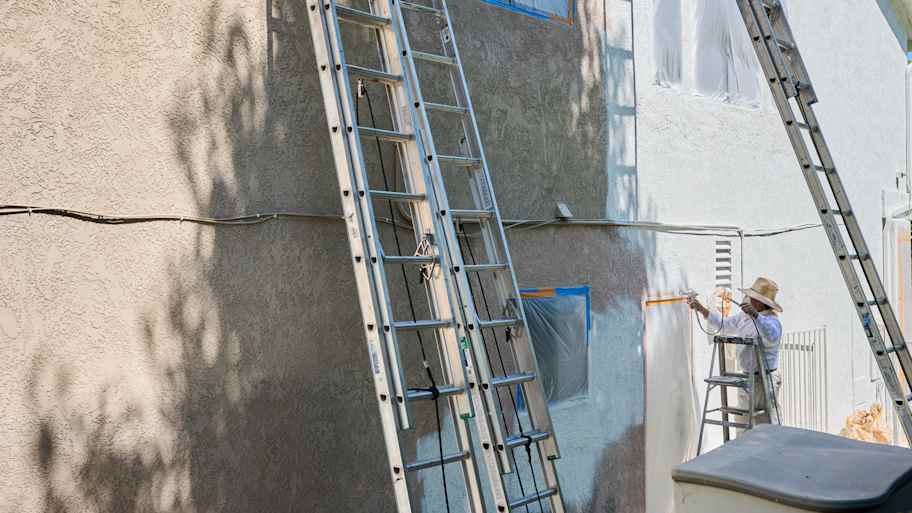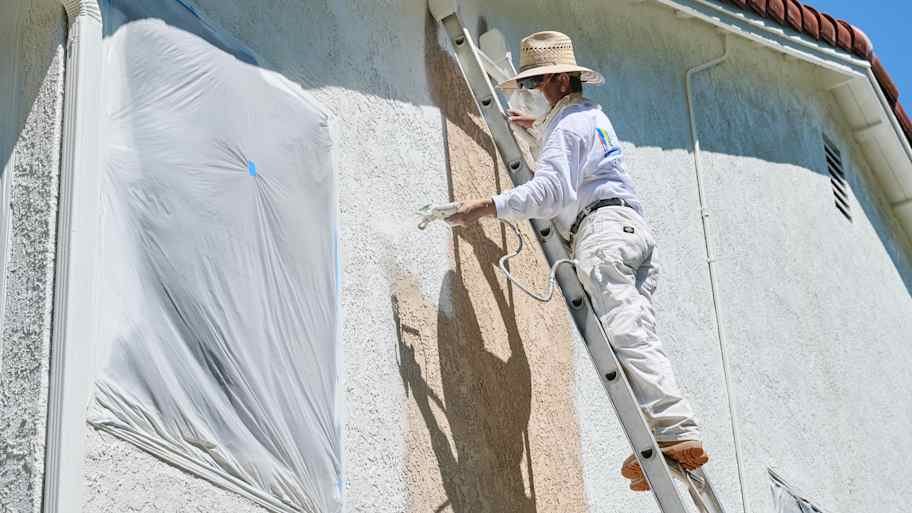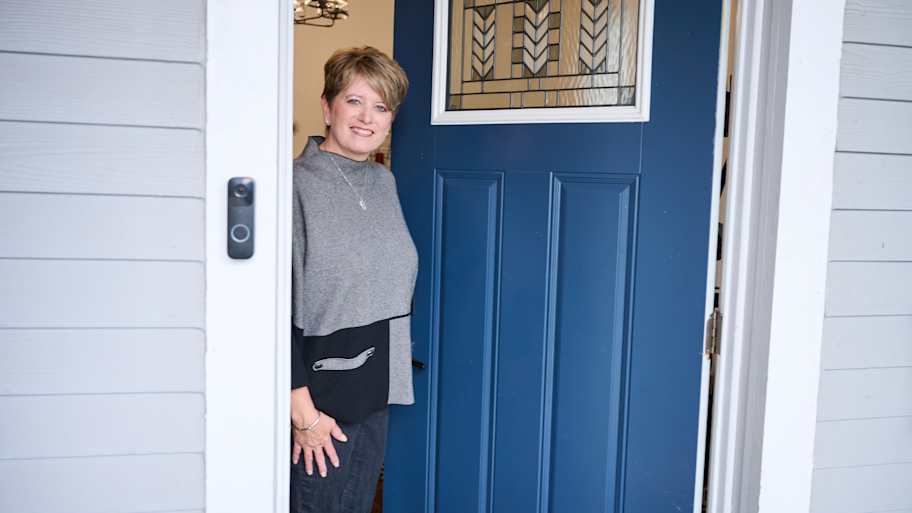What Should Painting Contracts Include? How to Hire a Painter
A solid contract will protect you from the unexpected during your painting project


Many professional painters and independent contractors have standard contracts ready to go, but at other times, you’ll need to prepare one yourself. Either way, make sure your contract outlines specifics like the scope of work, cost, and timeline. With a proper painting contract, communication between you and your contractor will be a breeze, and you can rest easy knowing everyone is on the same page.
What Is a Painting Contract?

A painting contract is a legal agreement between a customer and a painting contractor that outlines a specific painting job. Both parties—you and your contractor—should sign a painting contract before getting started.
The document should outline all the specifics involved in the project, whether it’s an interior or exterior paint job. Include as many details as possible to protect yourself in the event of an accident during the project or to eliminate the risk of unexpected costs or damages.
Before You Sign a Painting Contract
Do your due diligence to find a quality painter near you to work with on your painting project. Make sure to shop around and talk to at least three contractors before committing to one. There are several things you can do to properly vet your painting contractor, including:
Check references
Verify credentials
Meet the contractor
Clarify expectations
Ask about subcontractors
Get a cost estimate
What Should a Painting Contract Include?
Once you’ve found a contractor you mesh well with and are ready to move forward with your painting project, it’s time to draw up a contract. Your contract should be as detailed as possible to ensure the work plays out exactly how you want it and everyone is on the same page.
Cost and Payment Terms
Always include the total cost of the painting project in your contract. Having a set cost that you and your contractor both agree to will ensure that you won’t have to face any unexpected fees along the way.
If you don’t include the cost in your contract, you may get a shockingly high bill at the end of the work. And without proper signed documentation, you won’t have any legal recourse to object.
You should also lay out specific payment terms in your contract. Some contractors prefer an upfront deposit, while others may ask for regular payments throughout the entirety of the project. Talk to your painter to determine what they prefer and include that in the contract so you both know what to expect.
Scope of Work
In your contract, give an overview of the project and outline your expectations for what’s needed. If you want your trim painted in addition to your siding, explain this in the contract. That way, the contractor can’t go back on their word in the middle of the project. Including a description of the work in your contract will make communication between you and your contractor much more straightforward.
You can also outline specifics here, like adding two coats of paint on each wall or painting a primer coater first. Or, you may require them to come back to touch up any missed spots.
Project Changes
Any home improvement project is subject to changes. In painting, for example, this could be due to discovering a mold infestation that needs to be remedied before painting, because sandblasting revealed termite-damaged wood, or because the homeowner changed their mind on the trim color mid-project. The contract needs to spell out what happens when changes occur.
In most construction industries, modification to the contract requires a change order that states how the changes may affect the project's total cost. These change orders must be signed by both parties to be valid.
Industry Standards
You wouldn’t hire a professional if you expected them to do a half-hearted job that looked shoddy from the start and flaked away within a year of application. The industry standards clause helps to ensure you get what you pay for by setting out a detailed list of minimum standard levels of work used by other professional painters. This clause may specify that the painter will, for example:
Prime the surface before painting
Cover and tape off surfaces that are not to be painted
Use paint appropriate for the type of surface and location (e.g,. not applying indoor paint on your home’s exterior or failing to use specialty on aluminum siding)
Use an agreed-upon color and brand of paint that has been stored correctly
Apply two coats of paint using industry-standard proper brushing methods
Professionally finish edges and corners
Use of Premises
After a long day at work, coming home to find a painting crew’s truck in your parking space is not a welcomed sight. Avoid these issues by outlining them in your contract to make sure everyone understands where they are supposed to be. State whether or not they’re allowed inside the house, and under which circumstances (like only when you’re present). And if they aren’t allowed inside, whether you will provide a portapotty and other necessities or if that’s their responsibility.
Also, state how they must maintain their space. Make sure that they don’t leave open paint cans and tools out in the open for you to trip over or your dog to get into. Instead, outline a specific workspace to keep their materials in for the project’s duration and let them know your cleaning requirements during the job and after it’s complete.
Materials
If you have specific materials in mind for your painting project, make sure to list them in your contract. Be as specific as possible. If you want paint with a certain finish, you can even include the paint’s product number in the contract. Specify whether you will buy the supplies or the contractor will.
Your contract should also outline whether or not you will require painters to use drop cloths and take safety measures. Drop cloths ensure that stray paint doesn’t accidentally get onto any furniture or structures unfit for painting.
Timeline
Home improvement projects are notorious for dragging on longer than expected. To avoid having painters in and around your house for longer than you’d like, detail the painting project’s timeline in your contract and go over it with your contractor. Have a hard date where the project must wrap up and consider adding benchmark dates along the way.
The time it takes to paint a house varies. If you have a small and simple-shaped house and you’re hiring a contractor to paint its exterior, the job will likely only take three or four days. However, larger projects for more complex homes or buildings may take weeks to complete.
Insurance Requirements
Outline requirements for insurance and other regulations (like a license) in your contract. State that the contractor must follow all codes and local regulations. This protects you if a contractor or subcontractor gets injured or incorrectly completes the job.
Damage Control
Most contractors are considerate of their clients and take every precaution to prevent property damage in any way, shape, or form. But there’s always a chance that your contractor gets lazy (or the subcontractors they hire do). They could accidentally spill a can of paint onto your beautiful deck or muddy up your pristine lawn while trudging through the project site.
Even if your contractor is responsible and diligent, accidents happen. Make sure you outline the course of action in the event of property damage during the project. If damage does occur, this will prevent you from being on the hook for unnecessary repairs.
Warranty
Most painting companies offer a warranty on their work for two to three years. Though these warranties will exclude damage due to extreme weather, flood, or fire, they will protect you from flaking, peeling, and fading due to normal wear and tear during that period. The company may have two warranty periods: a shorter one for labor-related defects and a longer one for materials, as premium paint brands often offer warranties as long as 25 years.
Exit Clause
Having an exit clause is crucial in any contract. An exit clause lays out the course of action to take if one party has to back out of the project for whatever reason. Your exit clause could require the contractor to refund you your money if they don’t complete the job, which is useful if you have already paid them a deposit upfront.
After Your Painter Has Finished
When your painter has finished the job, you should be left with a satisfying result that meets the specifications outlined in your contract. Do a walk-through together to inspect all painted surfaces for spots that don't match the rest of the wall or trim that got paint sloshed onto it. If any touch-ups or re-dos are warranted per your contract, address these issues with your painter.
Once you're satisfied, it's time to make the final payment. You can let your pro know that you'll serve as a reference for future clients as needed, and you can leave them a positive review online to express your appreciation.
Finally, be prepared to monitor your paint job over time. Your contract should include a labor guarantee that promises your painter will correct chipping, peeling, blistering, flaking, or excessive fading resulting from faulty work within a few years after completion.
Cost to Hire a Painter
| House Painting Project | Cost Range |
|---|---|
| Home interior | $967–$3,044 |
| Single room | $300–$2,800 |
| Home exterior | $1,810–$4,505 |
| Pool deck | $300–$7,650 |
The price of a painting job will depend on whether you hire an interior or exterior painter near you and what type of surface you have them paint. For example, the cost of painting a pool deck can vary wildly depending on its size, material, and the type of paint you use.
The cost to paint a home interior varies mostly by the total square footage of the home, while the cost to paint a room may have more to do with the type of room and the logistics of moving the furniture and appliances within. The cost to paint a home exterior has a lot to do with the home’s size and number of stories, but the siding material also greatly impacts price.
Lauren Murphy and Nick P. Cellucci contributed to this article.
Frequently Asked Questions
The typical paint job includes all necessary prep work, one or more coats of paint as specified by the contract, and cleanup. The total price quoted will account for labor, materials, and tax. Your painter should also conduct a home assessment to provide an accurate quote, a painting schedule, and a walkthrough once the job is complete.
Many painters determine prices for home painting jobs using a base rate per square foot. Others use square footage to estimate the amount of paint required and charge a multiple of the material cost, and some may estimate the time required and factor that in. In some cases, painters may simply offer to beat the lowest local quote you've received.
When considering whether to paint your house yourself, weigh two major factors. One is time. The larger your home, the more time and energy you'll spend painting it to ensure a quality result that you're satisfied with. Safety is the other, especially when painting a multi-story home exterior. If the job requires ladders or leaning out of windows, protect yourself by hiring a pro.





- Home Renovation Contracts: What Should Be Included?
- 10 Key Questions to Ask an Interior Painting Contractor Before Hiring Them
- A Crash Course for Hiring a Contractor
- 5 Things to Look for in Your Home Improvement Contract
- How to Hire a Painting Contractor
- Do You Pay Painters Upfront for a House-Painting Job?
- The Biggest Home Painter Pitfalls To Watch Out For
- Top Tips on Hiring the Perfect General Contractor for Your Next Project
- 12 Valuable Questions to Ask a Contractor
- Make a Splash on Your Home’s Exterior by Hiring the Best Painter










